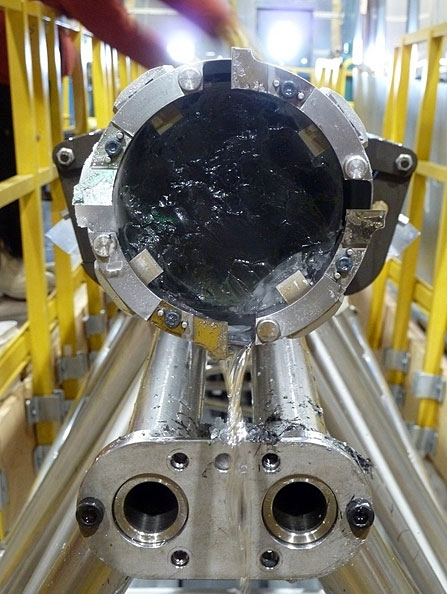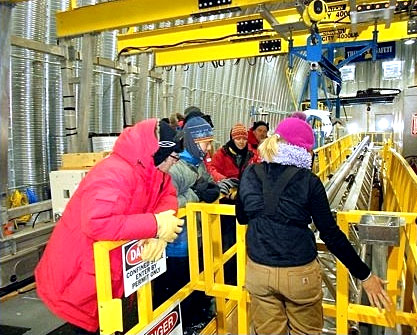|
The last coreWAIS Divide deepens borehole for research into climate changePosted January 13, 2012
A different sort of countdown was under way on New Year’s Eve at a remote field camp in West Antarctica. In this case, the count literally went down to near the bottom of the West Antarctic Ice Sheet (WAIS), where drillers extracted about 72 more meters of ice cores in five days, reaching a final depth of 3,405 meters for the multiyear WAIS Divide Ice Core project. Last year, project personnel had completed major coring operations after five years of drilling, stopping at about 3,331 meters, representing the deepest core ever drilled by the U.S. ice-coring community. [See previous article — Deep core complete: WAIS Divide project finishes five-year effort to retrieve 3,331 meters of ice.] Russians have the record for the deepest ice core, which they drilled in the 1990s at Vostok Station in East Antarctica, to a depth of 3,701 meters. “The core quality has been beyond excellent; the warm ice surprisingly presented no obstacle at all, and the speed with which the drilling was completed was astounding,” wrote Jeff Severinghaus “All this suggests to me that the engineering for warm-ice drilling that went into DISC has really paid off,” he added, referring to the high-tech drill that was developed by engineers with the Ice Drilling Design and Operations (IDDO) The ice core represents a window back in time on the Earth’s climate. Scientists can analyze bubbles of various gases trapped in the ice — particularly the important greenhouse gas carbon dioxide — to get a sample of the ancient atmosphere. Dust and chemicals found in the ice can also provide details about past climate. Scientists like Kendrick Taylor “I am really thankful for Julie Palais, our program manager at NSF, for pushing this project along all these years,” Taylor said. “Besides improving the ability to predict how human activity will change climate, the best part of the project is working with my science and support colleagues, many of whom have become great friends during the project.” Researchers had expected to recover ice as old as 100,000 years, but preliminary indications from processing the ice last year at the National Ice Core Laboratory While some ice-core records reach back more than 800,000 years into the past, the WAIS Divide ice core will boast the most high-resolution record to date, thanks to the high snow accumulation in the region that produces thick annual layers throughout much of the core. Taylor and his graduate student, T.J. Fudge “Additional measurements might push the annual dating back further, but it is already the most detailed record from Antarctica of the changes that occurred during the transition from the last ice age to the current warm period,” Taylor said. That sort of detail will help provide for an unprecedented reconstruction of carbon dioxide concentrations in the atmosphere over that time.1 2 Next |







